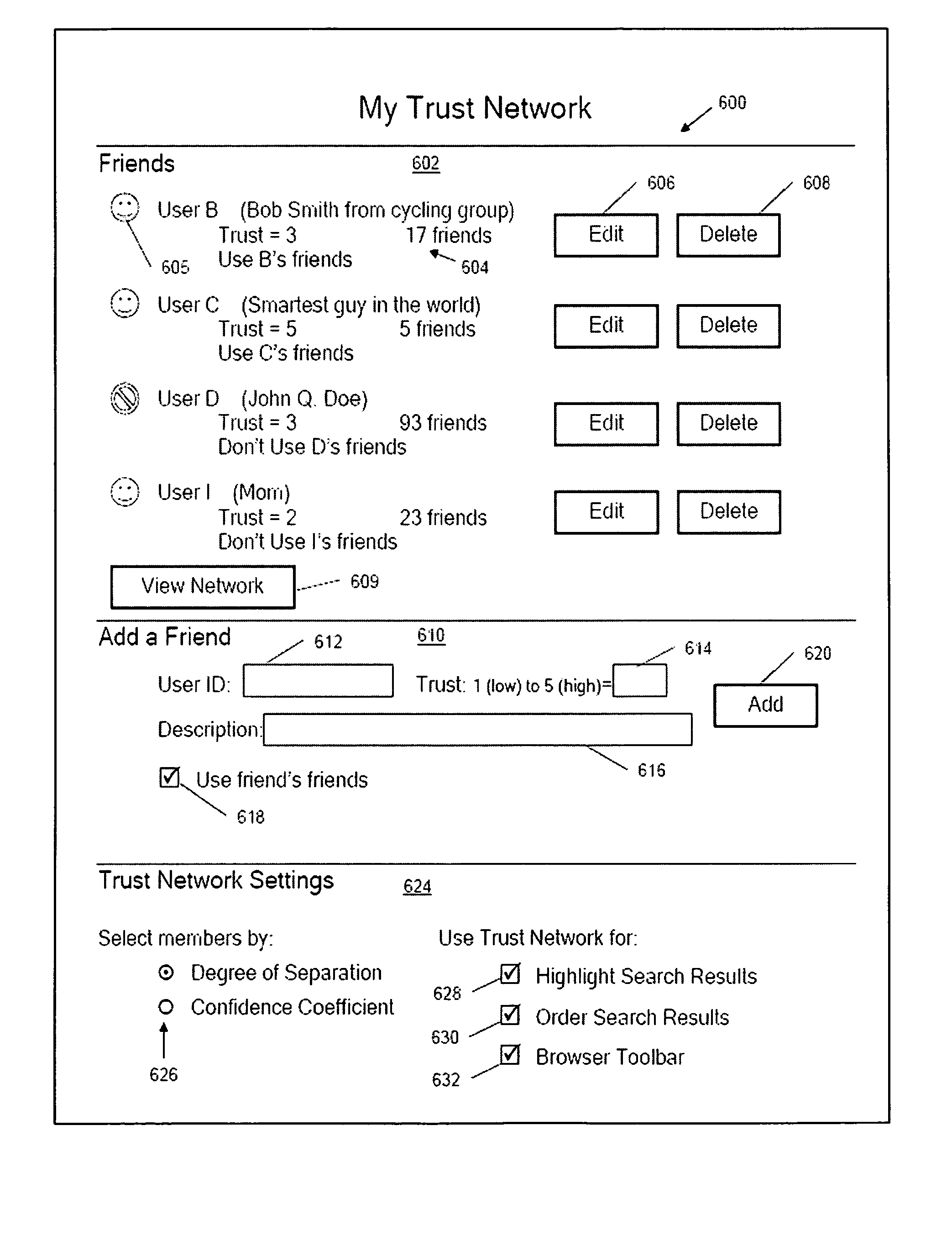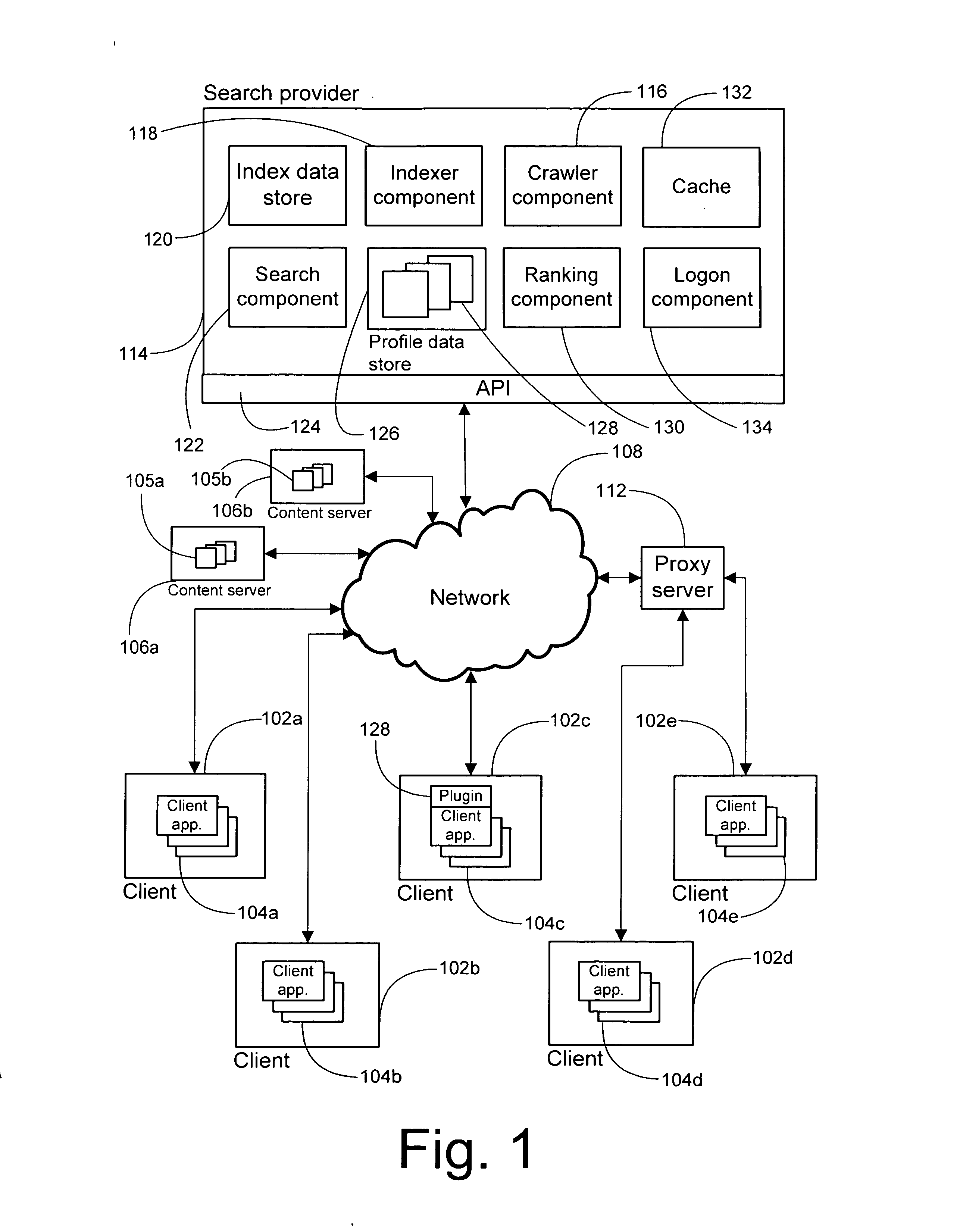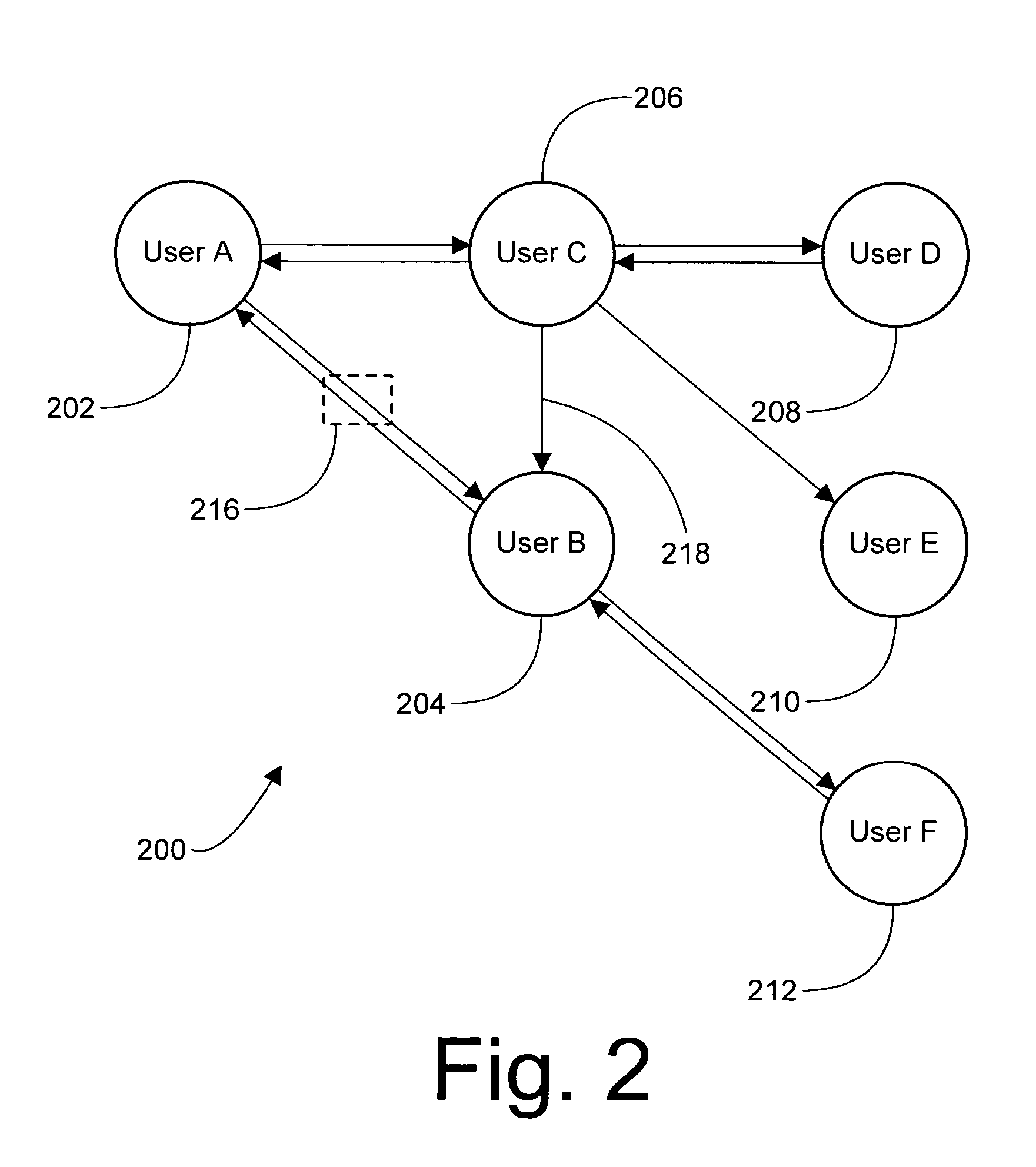Search engine with augmented relevance ranking by community participation
a community participation and relevance technology, applied in the field of systems and methods for improving the reliability of search results, can solve the problems of affecting the complexity of tokenization problems, the difficulty of users finding the information for which they are looking, and the slowness of directly searching through content items, so as to increase the density of trust in social networks
- Summary
- Abstract
- Description
- Claims
- Application Information
AI Technical Summary
Benefits of technology
Problems solved by technology
Method used
Image
Examples
Embodiment Construction
[0038] The present invention generally relates to systems and methods for improving the reliability of items in a result set resulting from execution of a search over a corpus of content items, as well as the order in which the items are presented to a user. Embodiments of the invention may be generally implemented in software and hardware computer systems, using combinations of both server-side and client-side hardware and software components, to provide a system and method for improving the reliability of a result set returned by a search engine. The system may be embodied in a variety of different types of hardware and software as is readily understood by those of skill in the art. The system may, for example, provide an application program interface (“API”) for use by developers to collect information to assist in the indexing of content items, as well as provide techniques for using the information for searching and ranking of result sets that are responsive to user queries.
[0...
PUM
 Login to View More
Login to View More Abstract
Description
Claims
Application Information
 Login to View More
Login to View More - R&D
- Intellectual Property
- Life Sciences
- Materials
- Tech Scout
- Unparalleled Data Quality
- Higher Quality Content
- 60% Fewer Hallucinations
Browse by: Latest US Patents, China's latest patents, Technical Efficacy Thesaurus, Application Domain, Technology Topic, Popular Technical Reports.
© 2025 PatSnap. All rights reserved.Legal|Privacy policy|Modern Slavery Act Transparency Statement|Sitemap|About US| Contact US: help@patsnap.com



